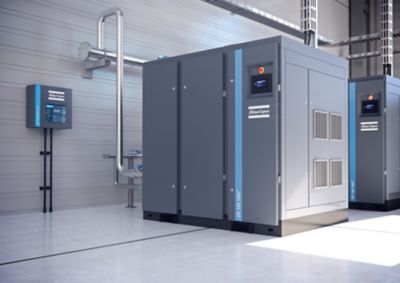Cement pneumatic conveying
You can usually find cement wherever things are being built … and that means just about everywhere. Four billion tons of this essential construction material are being produced annually.
With so many construction sites being operated across the globe and so much cement used, it is obvious that efficiently transporting the material to these sites – and within production facilities – is extremely important.
Pneumatic conveying – an efficient, reliable solution
Pneumatic cement conveying systems play a crucial role in this area. There are different pneumatic conveying types and technologies that can be used to move cement. It is important to remember that not every one of them is the ideal fit for every application. And finding the right solution can pay big dividends, especially with regard to reducing energy consumption, which is the biggest cost factor for operating compressors and blowers, as well as the (un)loading time.
To find the optimal system, let’s first look at the available options because it depends on the needs of the respective operation. For example, does the cement have to be moved to a vehicle or from a vehicle, how long do the pipelines/hoses have to be, etc.?
What to keep in mind when selecting a cement conveying system
Cement can be conveyed in different ways. It can be transported using either pressure (positive) conveying or vacuum (negative) conveying. The former uses compressed air at the start of the system to push the cement through the piping while it is “sucked” toward its destination when using the latter. Whether you need to use the positive or negative conveying method depends on system requirements, such as the distance the material has to be transported.
Cement can be conveyed using either the dilute or dense phase. Both phases have their advantages and disadvantages. Once you’ve decided on the right phase for your site and application, it is time to build up your system.
An air blower or compressor that delivers you the right flow and pressure will ensure a smooth and efficient conveying process. Even if you’re looking to replace your current compressed air system with a new one, it is worth it to do a free sizing check before you invest. A correctly sized compressed air installation will reduce unloading times, blockages and energy consumption to a minimum.
Fluidization for cement silos
When conveying cement from a silo, compressed air can also be used for the so-called “fluidization” process. Here, very low-pressure air is injected at the bottom side walls of the silo. This ensures that the cement does not stick to the sides of the silo and makes it easier to convey, which reduces energy costs and avoids system blockages. A dedicated compressed air system for fluidization can help you reduce energy costs.
With this wealth of options, pneumatic conveying offers the right solution for any cement conveying system.
Need help optimizing your cement conveying system?
Not sure how to replace your old compressed air system with a new one? Let us help you. The right size of installation is crucial: not only does it help you save on energy costs, it also shortens unloading times and helps you avoid blockages. Calculating the right size of installation is difficult and requires specific software and skills. We can help you find the optimal dilute phase pneumatic powder conveying system by offering you a free sizing calculation.

